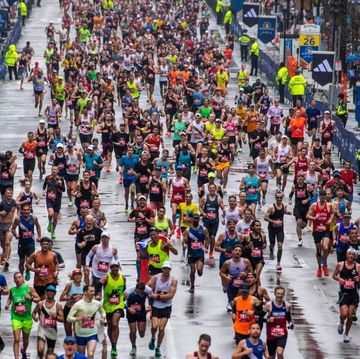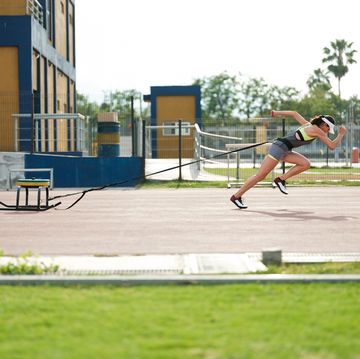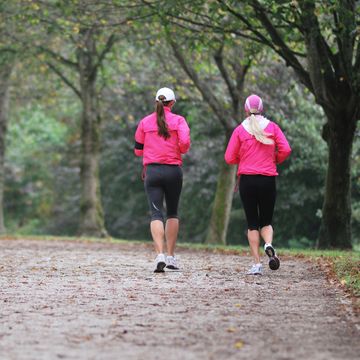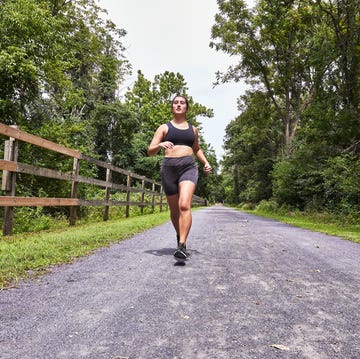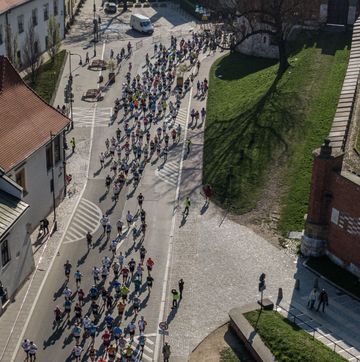In three decades of working with many of the best distance runners in the world at the Laboratory for Elite Athlete Performance, you’d expect that Dr. David Martin has discovered some important principles to make training more effective and efficient. So it’s something of a surprise when he says the most important one is what he calls the “do-do” principle.
“It’s not what or how much training you do, but how well you recover from the training you do do,” he says. “And if you don’t recover properly, if you end up with anemia or fatigue or injuries, then you’re in deep doo-doo.”
In an age when many coaches come up with increasingly diverse and demanding methods of training, Martin’s greatest advice is often simply, “Do less.” He says, “The most important point we’ve been able to give our athletes is to know when to back off, and to let them know that it’s OK to do so.
“It’s difficult for people to realize that doing nothing is doing something — there’s lots going on during recovery at the cellular level. Just because you don’t see the mitochondria hard at work doesn’t mean you’re not accomplishing anything.”
Martin maintains that “too few coaches know enough science and too few scientists know enough coaching,” with the result that many athletes wind up doing too much. “A coach sees his job as always telling athletes what to do, and that telling them to rest means he isn’t doing his job.
“All the training in the world isn’t going to make you as fit as the balance between training and health,” Martin continues, noting that the signs of overtraining — inappropriate sleep, tired muscles, an attitude that training becomes work rather than something to look forward to — are obvious signals to take some easy time to recharge the physical and mental batteries.
“You need to be hungry, be fit, and be fresh,” says Martin. “Only one of those has anything to do with training. You need to understand the importance of the interaction between mind and body.”
As an example, Martin says that runners who put in high mileage on the roads are at risk of footstrike hemolysis from the constant pounding. “Hemoglobin carries 98 percent of the blood’s oxygen. If you’re anemic, if your hemoglobin decreases, you’re losing the ability to perform because your VO2 max is decreased. It does no good to train harder — you’ll just dig yourself a deeper hole.”
Similarly, runners need to know the crucial interaction between training and nutrition. “Runners are food machines as they try to take in calories sufficient to match huge needs.” Martin says. “Too often this results in one or two large daily feedings. The accompanying insulin release promotes storage of these calories as fat in fat tissue rather than as glycogen in the liver and working muscles.” Martin's advice? “Space your food intake so as to eat frequent small meals, minimizing insulin release. Position three snacks around a light but healthy breakfast, lunch, and dinner.”
When Martin consults with elite runners for the first time, he asks them to self-evaluate three things: their long-term goals, short-term goals, and level of commitment. “That's going to be different for a single guy just finished with college compared to a married graduate student with a part-time job,” he says. “Your energy pie doesn’t enlarge just because you want to do more things. It’s common sense, but common sense isn’t very common today.”
Here are some of Martin’s common sense findings that can help runners of all abilities improve their performance:
Break The Job Down Into Small Pieces
This philosophy can be applied to races. “Think of the 1,500 as two races,” says Martin. “Everyone can get to 1,200 — it’s what happens over the last 300 that determines who wins.” View the marathon as a 20-mile run followed by a 10K race. “We tell even the top level marathoners, don’t look at 21, 22, 23 miles and think of how tired you’re getting. Picture yourself running 10K splits, imagining yourself running faster, with a different, faster stride.”
Look at Things Early
View the elements of a race as challenges, not problems, and develop strategies to meet these challenges. “There again it’s attitude and aptitude,” says Martin. “Create a scenario for success. Identify concerns that need to be addressed and prioritize them, make a list. If you’re running in hot conditions, like the marathoners in Athens or Osaka, the three big things to address are pace, fluids, and clothing. Think about the little things associated with that. You’ll probably be splashing water on yourself, so wear small socks, test them on training runs, get them wet to ensure they don’t cause blisters. Spray waterproofing on your racing flats. Don’t use sunscreen the day of a race, because the water will bead up and roll off before it can cool you.”
Play to Your Strengths
When it comes to designing strategies for racing and training, see how your fitness will allow you to race optimally. “Don’t think of your weaknesses as weakness, but something to be de-emphasized in a race, and worked on in training,” says Martin.
Know Your Profile
“Runner, know thyself, is really crucial,” says Martin. “When we do physiological profiling, we often find a variation in pulmonary function. Some athletes have larger than normal lungs; as a result they find going to altitude less stressful, and gain more benefit from that. Those who are at the higher end of the hemoglobin ranges also have a better reaction to altitude. They're important facts about your physiology that can help you decide what kind of training environment is best for you.” For the average runner, know what type of workouts you respond to best, and emphasize them in
your training.
Take It Up
“One of the most interesting findings I’ve come up with is that marathoners who include a generous amount of training at race pace are going to be better off than those who don’t,” says Martin. The problem is that frequent bouts of that can often lead to injury. Martin’s answer is to take the effort uphill. “The ideal is to run race-pace effort once a week up a 10- to 15K-long hill. It forces you to use more upper body, but with less impact and injury risk. It also makes you very sensitive to pace, and you need that in a race.”
Think Yourself to the Finish
“A lot of athletes will talk to me about minimizing slowing down at the end of a race,” says Martin. “I tell them it’s the same thing as doing a VO2 max test on the treadmill — quicken your stride, lower your shoulders, think form — really just instructions to relax. You’ll use less oxygen if you’re running smoother, so you can run faster.
“Try to take your mind off fatigue — thinking about beauty costs less energy, you’ll get more out of yourself than you think you have. Roger Bannister said, ‘Don’t think about the wretchedness of racing poorly, think about the beauty of competing well.’ That’s pretty good advice.”
Lessons from Dr. Dave Martin's Lab
Insights from the Laboratory of Elite Athletic Performance
by Jim Gerweck

Watch Next

Advertisement - Continue Reading Below

First Boston Marathon? Here‘s What to Know

Foods That Cut Inflammation to Improve Performance

How to Estimate Your Lactate Threshold Pace
6 Pace Charts to Help Guide Your Race Training
Advertisement - Continue Reading Below
Advertisement - Continue Reading Below
